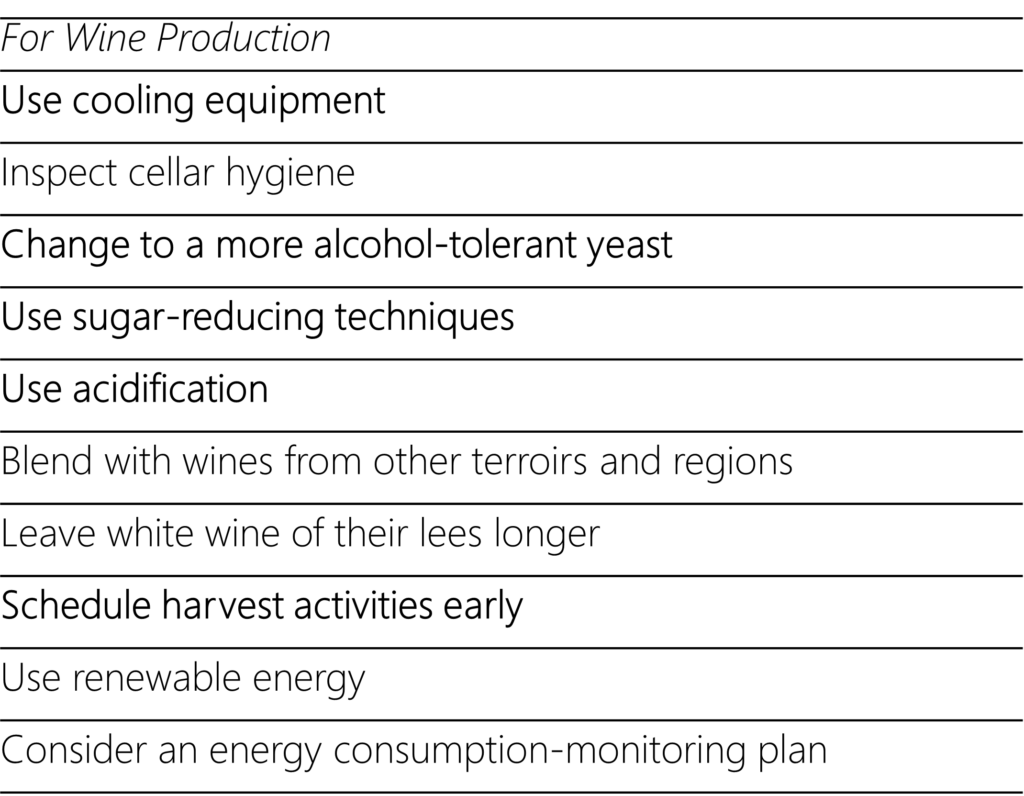By Rachel Germanier and Niccoló Moriccian
Climate change, or more accurately ‘climate crisis’ [1] is a very real phenomenon and is affecting agriculture worldwide [2]. Not only are temperatures rising, but water scarcity, heatwaves, irregular weather conditions and insect migration are all challenges faced by farmers [3]. Wine-makers face particular struggles related to the climate and small-scale wine producers are often poorly equipped in the face of these difficulties.
This post will present the findings of a study carried out in a particular area of Tuscany to explore how agritourism owners, who also grow grapes and make and sell their own wine, are perceiving and adapting to these difficulties.
The study [4] involved interviewing eight owners of agritourisms in the Val d’Orcia region of Tuscany, to determine, firstly, their perceptions of a changing climate in their vineyards.

Figure 1. Map of Tuscany with the small area of Val d’Orcia in the south east coloured in green [5]. Reprinted with permission from Bernard Eben. 2017, Bernard Eben.
Perceptions of climate change in the vineyard
Climate change is having a “tangible” (R1) effect in the vineyards with winemakers noting that conditions are often out of their control and no longer following the traditional, expected weather patterns. They mention that “global warming … [is] really worrying us” (R2) with the seasons going “crazy”. Noticeable to them are rising temperatures, less precipitation and changes in precipitation patterns. Frosts are coming later and harder, summers are hotter than usual, and huge storms with “water bombs” as well as violent and damaging hailstorms are becoming more frequent. Wetter weather too, impacting the disease load of the vines, was also mentioned by the wine-growers with Personospora and esca becoming particularly worrisome.
Adapting to the new normal
Intuitively, the winegrowers are pruning later to protect their vineyards from the more frequent late frosts, they leave more grapes on the vice and harvest earlier than previously to prevent a excessive sugar-load during wine-making. Steps are being taken to prevent erosion during the afore-mentioned water bombs by using cover crops in the vineyards and, in alignment with the organic approach taken by several of the interviewees, straw is being considered to ameliorate soil texture.
Regarding water provision, interviewees’ attitudes varied depending on the exact location of their vines. “Hopes” were articulated that clay soils would retain sufficient moisture, or that local springs would continue to provide adequate water. More proactively, farmers indicated that they were watering less, using less water during phytosanitary treatments and also considering building dams / ponds to capture and stock water ready for “emergencies”.
Taking a longer term perspective, there was mention by one participant regarding the potential benefits of planting a completely different crop – rice – but none of the interviewees addressed the thought of changing to a different, potentially better adapted, grape variety. Instead, the matter of planting elsewhere was mooted by one interviewee.
Mozell and Thach [6] suggested 15 strategies for vineyard management when faced with a changing climate, as can be seen below in Table 1. Those in bold were suggested in the Val d’Orcian study.
Table I. Adaptation strategies in the vineyard

Whilst some of these strategies – harvesting at night, for example – require a change in organisation only and could be seen as a ‘quick fix’, many of the others are either potentially extremely difficult depending on the terrain – re-orienting rows for example, or require investment – such as implementing a pest management system and changing variety, or are a longer term option, including training vines differently.
Perceptions of climate change in the vineyard
The second part of the study addressed the perceptions and adaptations undertaken in the cellar by the small-scale winemakers and again, their actions were compared to the recommendations in the literature.
Undeniably, the strongest impact the small-scale vintners are facing is the elevated alcohol levels due to the high sugar levels which they try to balance with their desire to produce “elegant” wines (R4) by selecting yeast strains (R1, R3 and R4) to reduce acidity levels. Additionally, the cellars themselves are warming to “insanely high” (R2) temperatures leading to the winemakers considering installing cooling systems to “avoid possible temperature fluctuations” (R2). Other than these strategies, the farmers acknowledge that at some point they will no doubt have to change their wine-making practices but they are vague about how they will proceed.
Comparing, again, their practices (in bold) with Mozell and Thach [6]’s adaptations, see Table 2, we can see a considerable gap between what is recommended and what is being undertaken in Val d’Orcian wine cellars:

A major consideration for the wine-growers interviewed was financial investment combined with a lack of expert knowledge. There is a strong feeling that they are heading into unchartered territory which their traditional knowledge-set has poorly equipped them for and they do not have the financial capacity to change strategy – even if they knew which steps would be beneficial for them. Despite many of the farmers adopting an organic approach to their farming, the use of renewable energy as a sustainable option was only mentioned by R1 and even then, he cited the constraints of the UNESCO Heritage site as not allowing him to install them – in addition to citing the financial layout this would require.
We conclude that small-scale farmers would benefit from education regarding climate change and adaptations which can be made as well as support from governmental institutions at a local level to encourage the take-up of suitable options to enable these custodians of the land to continue their traditional farming practices but in the new climatic landscape.
For more information: https://www.mdpi.com/2071-1050/15/3/2100

Rachel Germanier is Associate Professor at Les Roches Global Hospitality Education where she teaches post- and undergraduate courses and co-ordinates dissertations. She has eclectic research interests ranging from wine, sustainable practices, interaction and humour.

Niccoló Moricciani is a 2022 graduate with honours and distinction from Les Roches Global Hospitality Education. He returned to his home town in Val d´Orcia to be an entrepreneur and an integral part of his family’s agritouristic hospitality business. His family has a decade-long tradition of producing local wines and olive oil and interconnecting them with their hospitality services.
References
- D. Archer and S. Rahmstorf, The climate crisis: An introductory guide to climate change. New York: Cambridge University Press, 2010. [Online]. Available: http://search.ebscohost.com/login.aspx?direct=true&db=nlebk&AN=527577&site=eds-live&scope=site&authtype=uid
- S. M. Howden, J.-F. Soussana, F. N. Tubiello, N. Chhetri, M. Dunlop, and H. Meinke, “Adapting agriculture to climate change,” Proc. Natl. Acad. Sci., vol. 104, no. 50, pp. 19691–19696, Dec. 2007, doi: 10.1073/pnas.0701890104.
- World Health Organisation & United Nations, “Climate and health country profiles – 2015 A global overview.,” 2015. Accessed: Dec. 23, 2021. [Online]. Available: https://apps.who.int/iris/bitstream/handle/10665/208855/WHO_FWC_PHE_EPE_15.01_eng.pdf?ua=1
- R. Germanier and N. Moricciani, “Perceiving and adapting to climate change: Perspectives of Tuscan wine-producing agritourism owners,” Sustainability, vol. 15, no. 2100, 2023, doi: 10.3390/su15032100.
- B. Eben, Val D’Orcia. 2017. Accessed: Dec. 22, 2021. [Image]. Available: https://leblogduvoyage.info/val-dorcia/
M. R. Mozell and L. Thach, “The impact of climate change on the global wine industry: Challenges & solutions,” Wine Econ. Policy, vol. 3, no. 2, pp. 81–89, Dec. 2014, doi: 10.1016/j.wep.2014.08.001.

